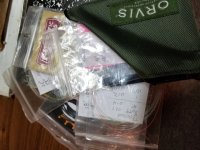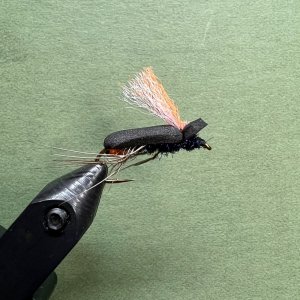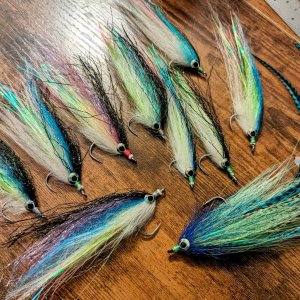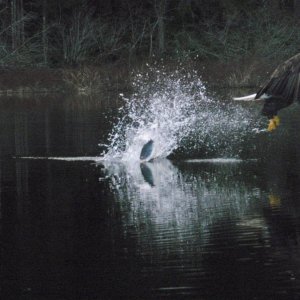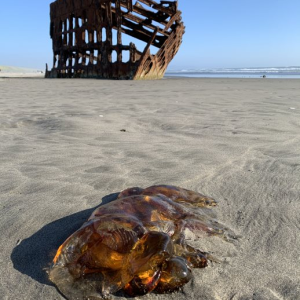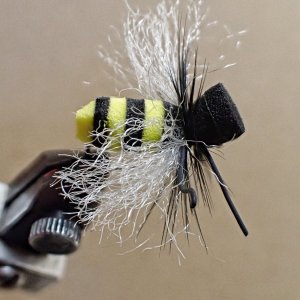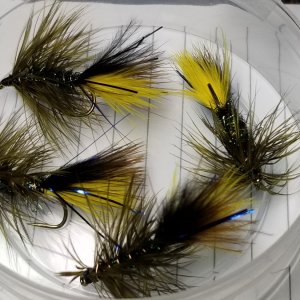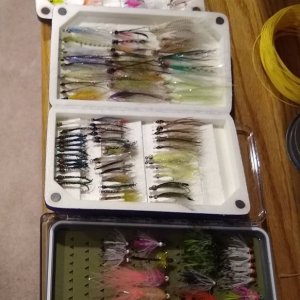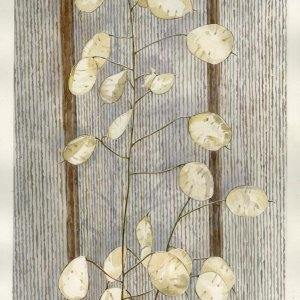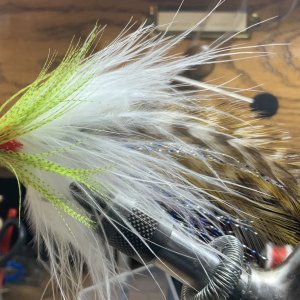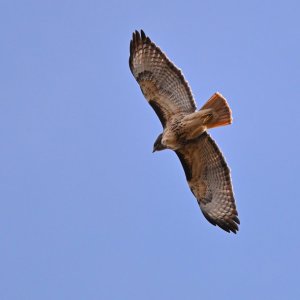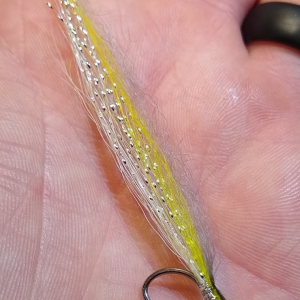I love tying my own leaders since I can customize the performance, save a bunch, and, in my opinion, out-perform the expensive store-bought leaders. Below is what I've come up with but, as a perpetual student, I'm curious to know what other folks are tying and using.
In alphabetical order, then, here are what I've been using:
Bonefish: These are vacation fish for me, so I just go with the 50/50 method. It's easy to remember, easy to tie.
5' 30lb mono
2.5' 20lb mono
15" 15lb mono
2-2.5' 12lb mono
Dry Fly: This leader lands with automatic s-curves. I'm good at knots, not so great at dry fly presentation. Therefore:
20” 15lb Maxima Chameleon
20” 12lb Maxima Chameleon
8-10” (longer = more slack but less “power”) 8lb Maxima Chameleon
8-10” (longer = more slack but less “power”) 8lb Gold Stren (sometimes I can't find the dry fly once it lands. This points towards it and helps me.)
12” 2x nylon (not fluoro) tippet
12” 3x nylon (not fluoro) tippet
12-14” (more = more slack but less “power”) 4x nylon (not fluoro) tippet
18-48” (fly, wind, and conditions dependent) 4x/5x/6x nylon (not fluoro) tippet.
Mono Rig for Rivers- All-Purpose: Dry flies, throw indicators, jig streamers, etc. Will actually cast a fly like a fly line--at least on my rods.
~25’ - 20lb Maxima Chameleon.
2’ - 10lb Maxima Chameleon.
12” - 0x fluoro.
12” - 1x fluoro.
14” - 1x two-tone sighter (I like Cortland's black and white)
2mm Tippet ring
3'+ - 5x or 6x fluoro. Tag fly is tied 18" or so away from point fly using triple surgeon's knot on about 9" of a 1x heavier tippet than the point fly. Length of the tag is never longer than 1/2 distance between tag and point fly.
Mono Rig for Rivers - Pure Nymphing: Dirty, dirty nymphing. Cuts through the water and has very, very little drag.
24' - 5lb Maxima Chameleon.
2' - 4x two-tone sighter
3'+ - 5x or 6x fluoro. Tag fly is tied 18" or so away from point fly using triple surgeon's knot on about 9" of a 1x heavier tippet than the point fly. Length of the tag is never longer than 1/2 distance between tag and point fly.
Well, that's what I've got. What are your formulas?
In alphabetical order, then, here are what I've been using:
Bonefish: These are vacation fish for me, so I just go with the 50/50 method. It's easy to remember, easy to tie.
5' 30lb mono
2.5' 20lb mono
15" 15lb mono
2-2.5' 12lb mono
Dry Fly: This leader lands with automatic s-curves. I'm good at knots, not so great at dry fly presentation. Therefore:
20” 15lb Maxima Chameleon
20” 12lb Maxima Chameleon
8-10” (longer = more slack but less “power”) 8lb Maxima Chameleon
8-10” (longer = more slack but less “power”) 8lb Gold Stren (sometimes I can't find the dry fly once it lands. This points towards it and helps me.)
12” 2x nylon (not fluoro) tippet
12” 3x nylon (not fluoro) tippet
12-14” (more = more slack but less “power”) 4x nylon (not fluoro) tippet
18-48” (fly, wind, and conditions dependent) 4x/5x/6x nylon (not fluoro) tippet.
Mono Rig for Rivers- All-Purpose: Dry flies, throw indicators, jig streamers, etc. Will actually cast a fly like a fly line--at least on my rods.
~25’ - 20lb Maxima Chameleon.
2’ - 10lb Maxima Chameleon.
12” - 0x fluoro.
12” - 1x fluoro.
14” - 1x two-tone sighter (I like Cortland's black and white)
2mm Tippet ring
3'+ - 5x or 6x fluoro. Tag fly is tied 18" or so away from point fly using triple surgeon's knot on about 9" of a 1x heavier tippet than the point fly. Length of the tag is never longer than 1/2 distance between tag and point fly.
Mono Rig for Rivers - Pure Nymphing: Dirty, dirty nymphing. Cuts through the water and has very, very little drag.
24' - 5lb Maxima Chameleon.
2' - 4x two-tone sighter
3'+ - 5x or 6x fluoro. Tag fly is tied 18" or so away from point fly using triple surgeon's knot on about 9" of a 1x heavier tippet than the point fly. Length of the tag is never longer than 1/2 distance between tag and point fly.
Well, that's what I've got. What are your formulas?
Last edited:

